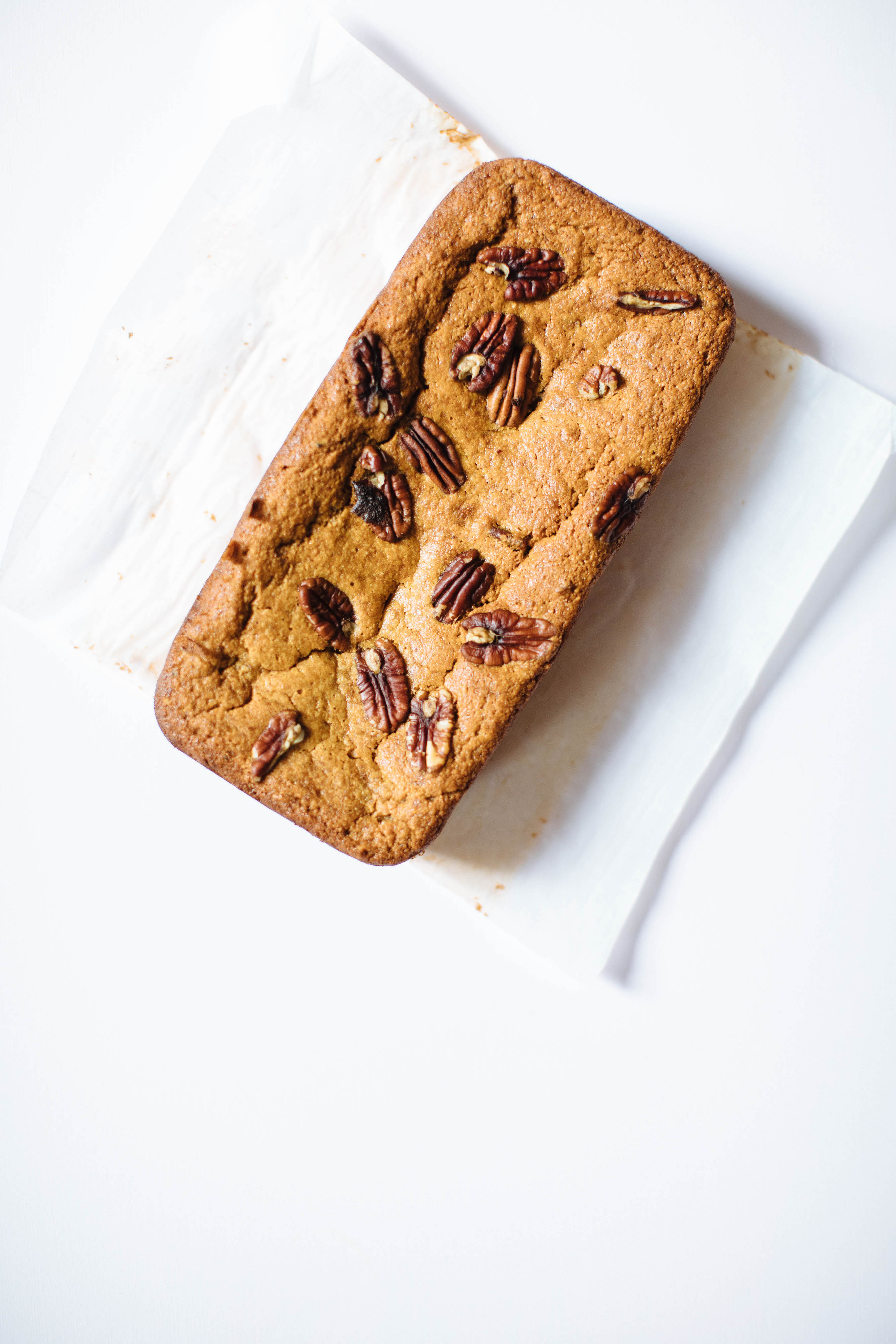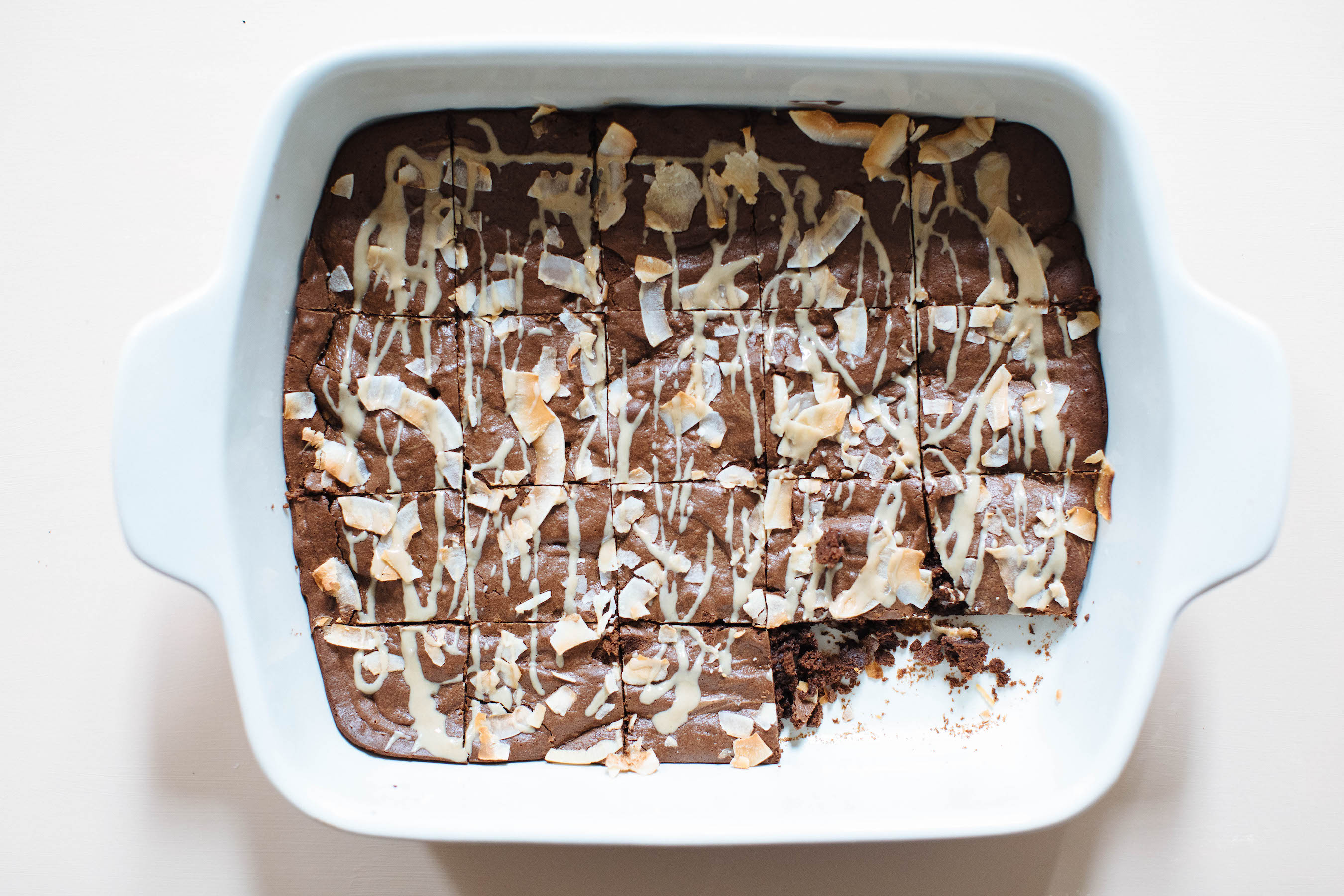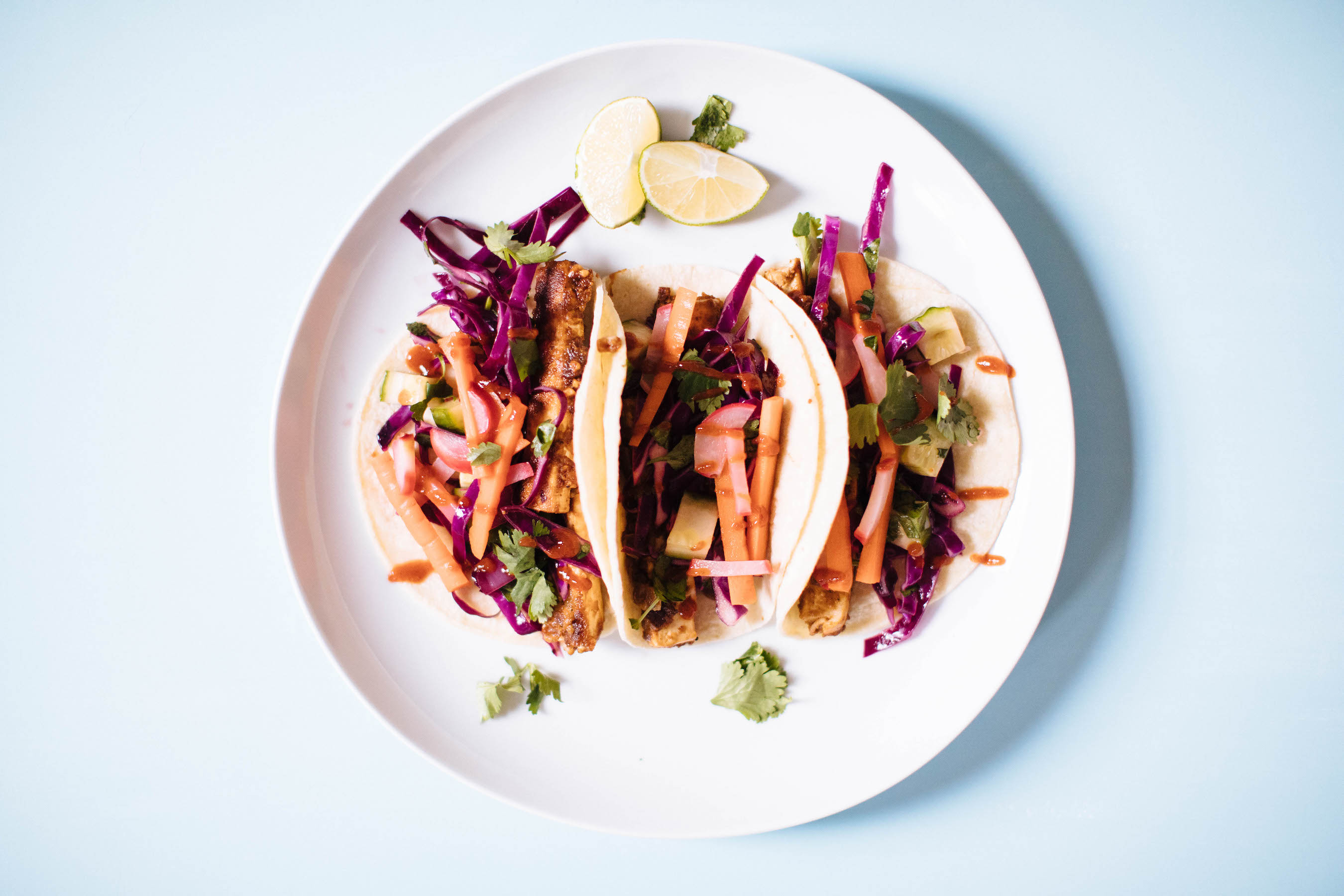What is gluten, how do you maintain a gluten-free diet and who should be eating gluten-free?
That’s what we’re covering in this guide!
Whether you’re considering a gluten-free lifestyle or have already made the change and are looking for some additional support, we’ve got you covered.
We’ll start with the basics!
What Is Gluten?
It is a nutrient? Is it a plant? What is this infamous food component that so many people are talking about!
Gluten is the name of a family of proteins that are found in wheat, rye, barley and triticale (a combination of rye and wheat). The primary proteins in the gluten family are gliadin and glutenin.
These gluten proteins are responsible for the elasticity found in gluten-containing food products. Think of the doughy, spongey texture associated with a fresh loaf of bread.
They essentially create a spider web in the center of the food item that acts as the glue holding everything together. It also helps bread products rise as they bake!
Why Eat Gluten Free?
There are three primary reasons for maintaining a gluten free diet; a wheat allergy, a gluten sensitivity/intolerance and celiac disease.
Before we discuss wheat allergies, let’s establish the difference between a gluten sensitivity/intolerance and celiac disease, the two are often confused for one another.
Gluten Sensitivity/Intolerance v. Celiac Disease
What’s the difference between the two?
Non-Celiac Gluten Sensitivity Or Intolerance
Depending on who you’re talking to, you may hear them say gluten sensitivity or gluten intolerance, the two phrases are commonly used interchangeably.
A gluten sensitivity or intolerance is characterized by a negative reaction to gluten intake without the presence of celiac disease.
Do people with gluten sensitivities or an intolerance have a disease? No, they do not. Can they still have debilitating symptoms associated with the consumption of gluten? Absolutely.
Possible symptoms may include diarrhea, constipation, bloating, lethargy and stomach pain.
Many disease states result in an increased likelihood of developing a gluten sensitivity/intolerance. Irritable bowel syndrome, ulcerative colitis, and various other auto-immune diseases are examples of this.
With that being said, it’s important to note that it is also quite common for people to inaccurately self-diagnose a gluten sensitivity. For example, a study was conducted in 2015 where 392 patients claiming to have a gluten sensitivity or intolerance were clinically investigated to determine the validity of their assumption.
The study concluded that only 26 of the patients actually had celiac disease, 27 patients had a legitimate gluten sensitivity or intolerance and the remaining 337 patients did not meet the diagnosis requirements (1).
Celiac Disease
Those with celiac disease may experience some of the same symptoms as those with a gluten sensitivity or intolerance, but there is a bit more severity here.
Celiac disease is an autoimmune disease. In this scenario, the body treats gluten as an unwanted invader. This results in the body attacking both gluten as well as the lining of the digestive tract.
More specifically, the villi lining the small intestine. Villi are essentially small, finger-like projections that are responsible for absorbing nutrients from the food we consume.
When celiac disease is present, every time gluten is consumed, more damage is done to these villi. This can result in the malabsorption of key nutrients and can also result in an increased risk of developing many disease states later on in life.
There are two primary ways to definitively diagnose celiac disease: a blood test or a biopsy.
For the blood test, you must be eating gluten in order for the results to be accurate. When positive, Tissue Transglutaminase Antibodies (tTG-IgA) are found in particularly high levels in the blood.
For the biopsy, a small sample of tissue is removed from the small intestine to determine whether or not damage has been done to the villi.
Wheat Allergy
Now that we know the difference between a gluten sensitivity/intolerance and celiac disease, let’s establish the definition of a wheat allergy.
A wheat allergy is a bit different. Reason being, it occurs when the body creates antibodies in response to protein found in wheat, but not necessarily gluten proteins.
A skin test or a blood test will usually be used to diagnose a wheat allergy.
Should I Be Eating a Gluten-Free Diet?
If you’re wondering whether or not maintaining a gluten-free diet is right for you, your best bet is to meet with a registered dietitian to determine whether or not your symptoms are associated with gluten intake.
Once this is appropriately determined, your next step will be to touch base with your doctor. They will help you determine whether it is a sensitivity/intolerance, celiac disease or wheat allergy.
Guide To Eating Gluten Free
After you’ve determined that eating gluten free is right for you – where should you start?
Depending on how reliant you are on gluten products, it may seem pretty daunting to suddenly remove all gluten from your diet.
Instead of abruptly removing all gluten products and resorting to your other food groups, finding viable substitutes can make the transition a bit smoother.
Understanding nutrition labels is a great way to confidently select gluten-free substitutes!
Label Reading When Eating Gluten Free
Reading labels can seem overwhelming and complicated when you’re first introduced to it, but I have a step-by-step guide for you that will help simplify the process.
Step 1: check out the packaging for a certified gluten free label or image
While not all gluten-free products will have this indication, if it does, it takes the guess work out of the equation for you! If you don’t see this indication, move on to step two.
Step 2: look at the allergen section of the nutrition label
The FDA has created a Food Allergen Label Law that requires all manufacturers to denote when any of the top 8 food allergens (milk, eggs, fish, crustacean shellfish, tree nuts, peanuts, wheat, and soy) are present in their products.
When reading labels, look towards the bottom of the label for the title “contains:”, if you see wheat listed there, you know the product is not gluten free. If on the other hand wheat is not listed, then move on to step three.
Step 3: check the ingredient list for barley, rye, triticale, malt and brewer’s yeast
If your product makes it through these three steps, you should be good to go! If you’re still unsure or having any difficulty with label reading for a gluten-free diet, you can always rely on plant-based products and food items that are naturally gluten free (i.e. meat, eggs, fruits, vegetables, etc.).
Plus, you can always work with a registered dietitian to get some individualized guidance!
Gluten Substitutes
Now that you’re able to read labels, let’s talk about some specific substitutions you can rely on for your former gluten-containing favorites.
Bread
Gluten-free bread products are becoming more readily available as the years go on. From traditional breads to tortillas, pizza crusts and even English muffins, there are quite a few options out there.
Look for products that use other nutrient dense ingredients such as quinoa, amaranth, chia, millet, flaxseeds, cashew flour, almond flour, chickpea flour and cassava flour.
Some gluten-free breads will sneak some unnecessary ingredients in there like excess cane sugar and high fructose corn syrup – keep an eye out for these.
Don’t forget, you can always make your own bread at home. This Gluten-Free Walnut Bread is one of my favorites!
Pasta & Noodles
Some of my favorite gluten-free pasta and noodle options are brown rice, bean and quinoa-based products. They often have a bit more protein and fiber than traditional pasta options, plus they even have some added fiber, vitamins and minerals.
All of these varieties are comparable in texture and taste to traditional pasta as well! You can find almost every shape and size in the grocery store – from elbows to linguini and noodles, you have quite a few options to choose from.
Baked Goods
There are so many great gluten-free flour mixes that can be used! From coconut flour to almond flour and rice flour, the combinations are endless.
If you’re baking at home, these brownies, these cookies and this banana bread are all great options for you to try out.
You can also find some awesome baked goods for your next birthday party or dinner party in the grocery store! Just keep an eye out for proper labeling as we discussed above.
Dressings & Sauces
Making your favorite store-bought dressings and sauces at home is a great way to keep things simple. You can use this Definitive Guide to Salad Dressings to get started!
If you’re a fan of soy sauce, liquid aminos are a great alternative. They’re naturally gluten free and have a very comparable taste with even less sodium.
Does Eating Gluten Free Work?
So you’ve just found out that you have celiac disease, but when you eat gluten you barely have any symptoms. That means it’s perfectly fine to have here and there? Not quite.
It’s very important to avoid consuming gluten if you have an allergy, disease or intolerance. First and foremost, if you are one of those people experiencing stomach pains, diarrhea, constipation or lethargy due to one of these complications, maintaining a gluten free diet will undoubtedly relieve these symptoms.
For example, I had a patient who had previously been experiencing stomach cramping, constipation and diarrhea weekly. Despite her various efforts, she was unable to make any significant progress in determining what was causing her symptoms. After abiding by a gluten-free diet for six weeks, she no longer had any of the above state symptoms. We then challenged this idea by adding gluten back into her diet, and the symptoms immediately came back.
If you’re not experiencing serious symptoms but you have celiac disease, you also need to abide by the diet. Consuming gluten is causing serious, tangible damage to the villi of your small intestine. A slip up here and there is completely understandable, we’re human after all! But try your best to abide by your doctor and registered dietitian’s recommendations- it will only help you in the long run.
NS Recommends
Here are some of our favorite gluten-free recipes for you to have some fun with!
- Gluten Free Blueberry Pancakes
- Mini Gluten Free Bread Rolls
- Gluten Free Chocolate Cake
- Gluten Free Orange Chicken Or Tofu
Connect With Us
I would love to hear from you – what has your experience been with gluten-free eating? I’m sure there are plenty of others out there who would love to hear about your experience too. As always, you can connect with us on Instagram via @nutritionstripped , @nutritionstrippederica, #nutritionstripped and #nswellnesscoaching.
The post Guide To Eating Gluten-Free appeared first on Nutrition Stripped.
from Nutrition Stripped https://ift.tt/2xi5eBF



Post a Comment